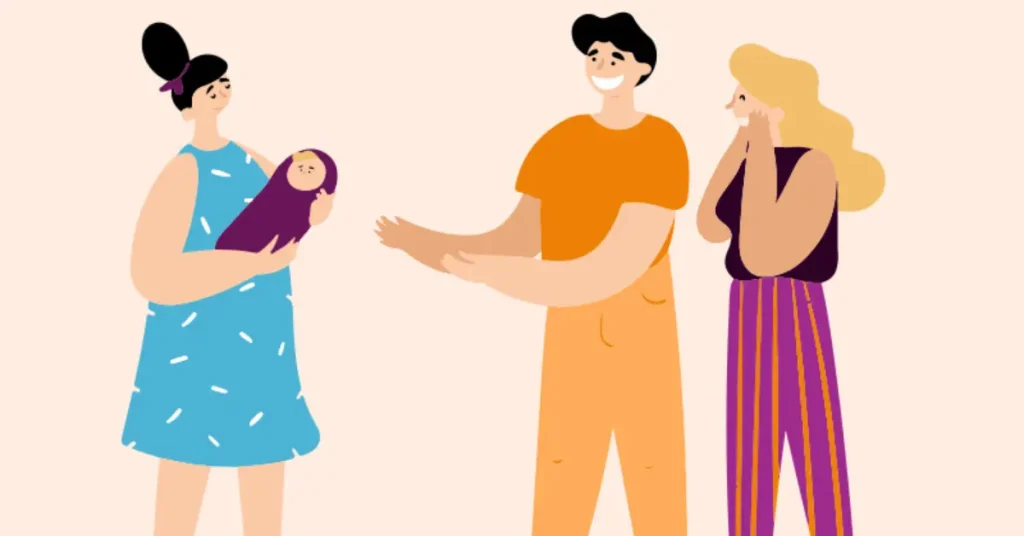If you’re a lesbian couple looking into family-building options, you’ve probably heard about reciprocal IVF. It’s such an amazing way for both partners to physically participate in bringing your baby into the world. As someone who’s helped many couples through this journey, we wanted to create this guide to walk you through everything you need to know about this special path to parenthood.
Understanding Reciprocal IVF as a Family-Building Option
Reciprocal IVF lets both women in a relationship take part in creating their baby. One partner provides the eggs, which get fertilized in a lab, while the other carries the pregnancy. This way, one mom has a genetic connection to the child, and the other experiences pregnancy and birth. The beauty of reciprocal IVF is that both of you get to be moms in your own unique ways.
Many couples tell me that this option feels more inclusive than other fertility treatments. Instead of just one partner doing everything, you both get to play important roles. This shared experience can create an incredible bond between you two even before your little one arrives.
The Complete Fertility Process for Lesbian Couples
The reciprocal IVF journey has several steps that happen over a few months. First, the partner providing eggs takes hormone medications to produce multiple eggs. These meds usually last about 10-14 days, with regular monitoring through ultrasounds and blood tests.
Next comes the egg retrieval, a quick procedure where your doctor collects the mature eggs. Meanwhile, you’ll need to select a sperm donor, either known or anonymous. The eggs and sperm meet in the lab, creating embryos that grow for about 5-7 days before the best one gets transferred to the carrying partner’s uterus.
After the transfer, you’ll wait about two weeks before taking a pregnancy test. The whole process might seem complex, but your fertility team will guide you through each step with care and support.
Choosing the Right Fertility Agency for Your Journey
Finding a agency that specializes in LGBTQ+ family building can make all the difference in your reciprocal IVF experience. Look for places that not only have good success rates but also understand the unique needs of lesbian couples.
When agency-shopping, don’t be shy about asking questions! Find out how many same-sex couples they’ve worked with and what their approach is to reciprocal IVF. A good agency should make both of you feel comfortable, respected, and heard throughout the process.

Key Considerations: Success Rates & Average Costs
Reciprocal IVF success rates vary based on several factors, particularly the age of the partner providing eggs. Generally, younger egg providers (under 35) see higher success rates compared to those over 35. Most agencies can share their specific statistics during your consultation.
As for costs, reciprocal IVF involves several expense categories:
- Initial consultations and fertility testing
- Medications for egg stimulation
- Egg retrieval procedure
- Lab fertilization and embryo development
- Embryo transfer to the carrying partner
- Additional options like genetic testing
Many agencies offer payment plans or financing options to help manage these expenses. Some insurance plans might cover portions of treatment, though coverage for LGBTQ+ family building varies widely by provider and location.
Embryo Development During Vitro Fertilization
During the lab phase of reciprocal IVF, your embryologists work some real magic. After fertilization, they monitor your embryos daily as they divide from single cells into complex structures. By day 5-7, the strongest embryos reach the blastocyst stage, which is when they’re ready for transfer or freezing.
Some couples choose to have genetic testing done on their embryos before transfer. This can screen for chromosomal issues and sometimes lets you know the sex of each embryo. Your doctor can help you decide if this extra step makes sense for your situation.


Embracing Co-Maternity: The Emotional Journey of Shared Motherhood
The emotional side of reciprocal IVF is just as important as the medical stuff. Many couples describe feeling deeply connected through this shared motherhood experience. When one partner carries the other’s genetic child, it creates a unique bond that’s hard to put into words.
But let’s be real – this journey can bring up all kinds of feelings too. You might face questions from family members who don’t understand reciprocal IVF. Or you might deal with insurance frustrations or unexpected medical challenges along the way.
Remember, while the reciprocal IVF journey has its challenges, so many couples find that the joy of creating their family together makes every step worthwhile. Your path to parenthood might look different from others, but it’s no less beautiful or meaningful.

FAQ
What is the reciprocal IVF Process?
Reciprocal IVF involves one partner undergoing ovarian stimulation to retrieve eggs, which are then fertilized with donor sperm in a lab. The resulting embryos develop for 5-7 days before one is transferred for implantation in the other partner’s uterus, creating a shared biological experience.
Is reciprocal IVF for lesbian couples a good idea?
Reciprocal IVF allows same-sex female couples to both participate biologically in having a baby. One partner contributes genetically while the other experiences pregnancy, creating a unique bond. This approach also establishes clearer parental rights compared to some alternative methods.
What are some key considerations for reciprocal IVF?
Key considerations include choosing a reproductive agency experienced with LGBTQ+ families, selecting a reputable sperm bank, discussing preimplantation genetic testing options, understanding success rates based on age, and preparing emotionally and financially for potentially multiple IVF cycles.















